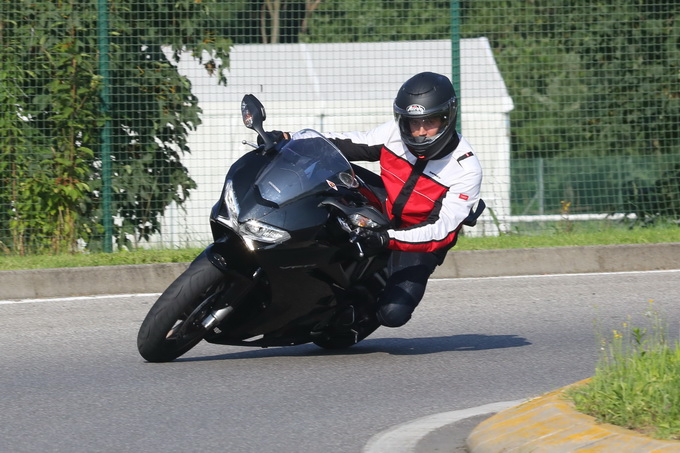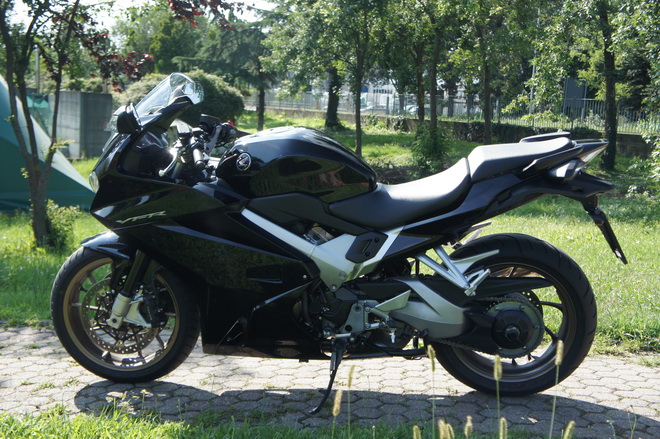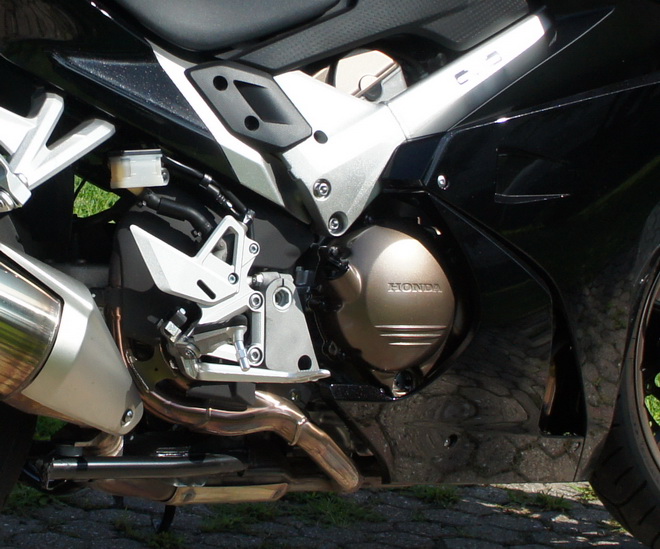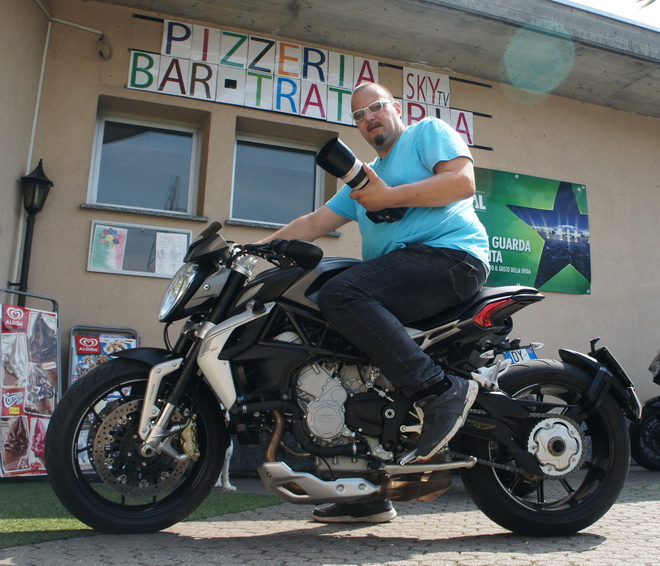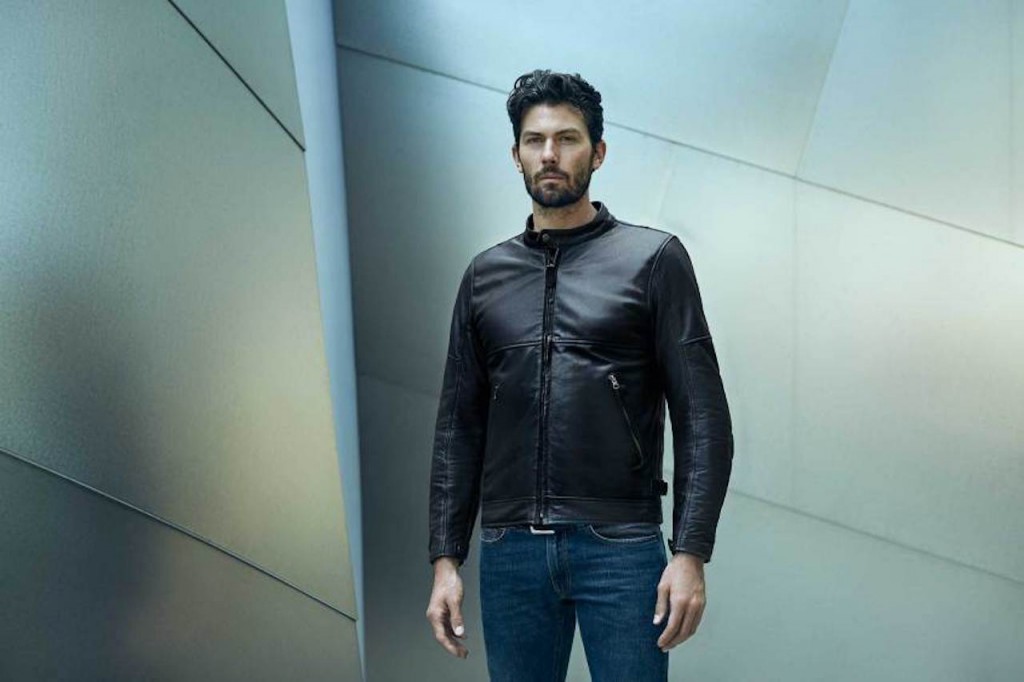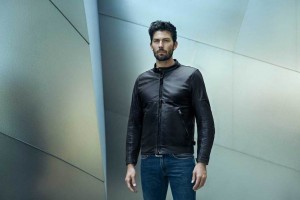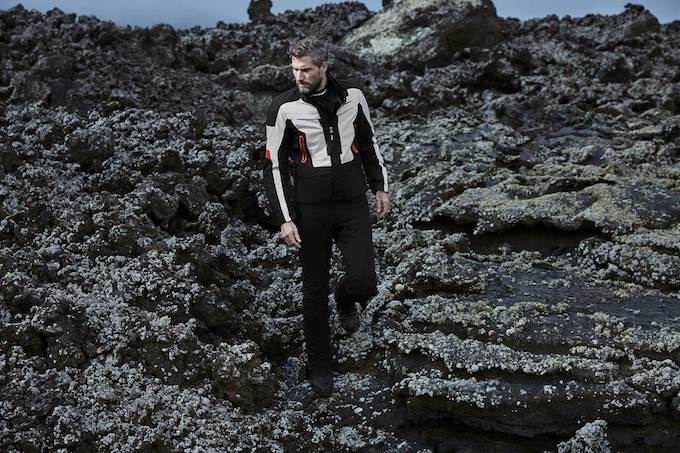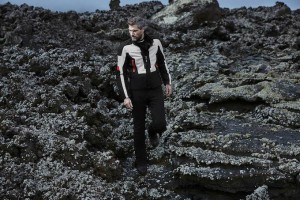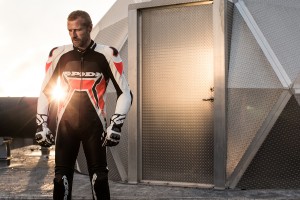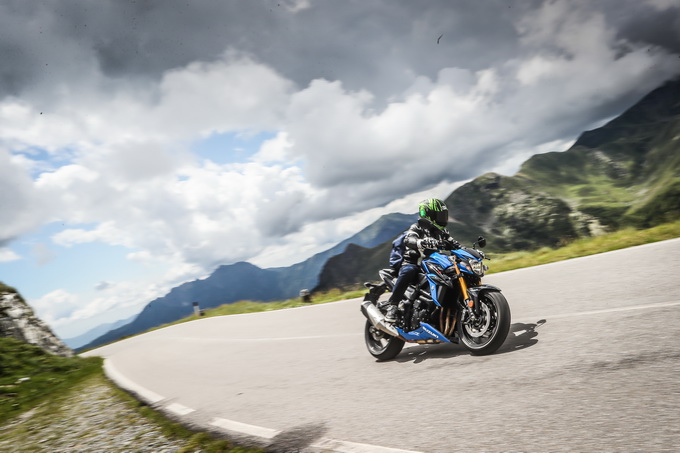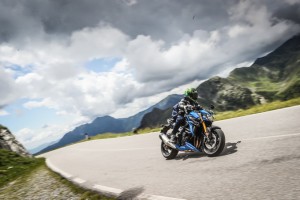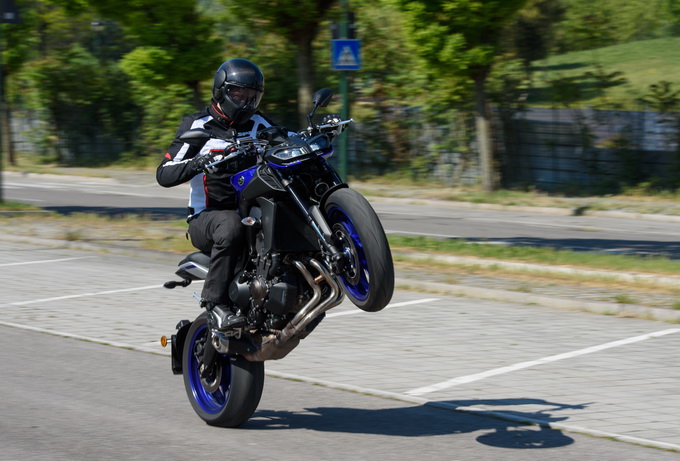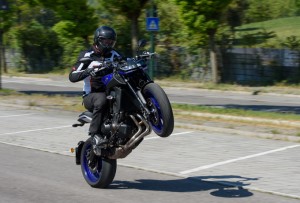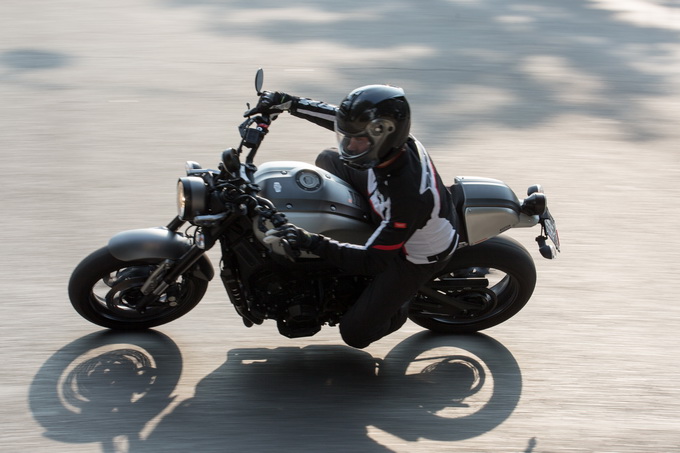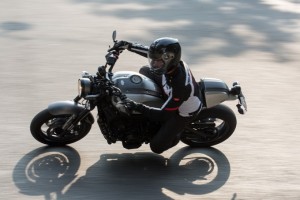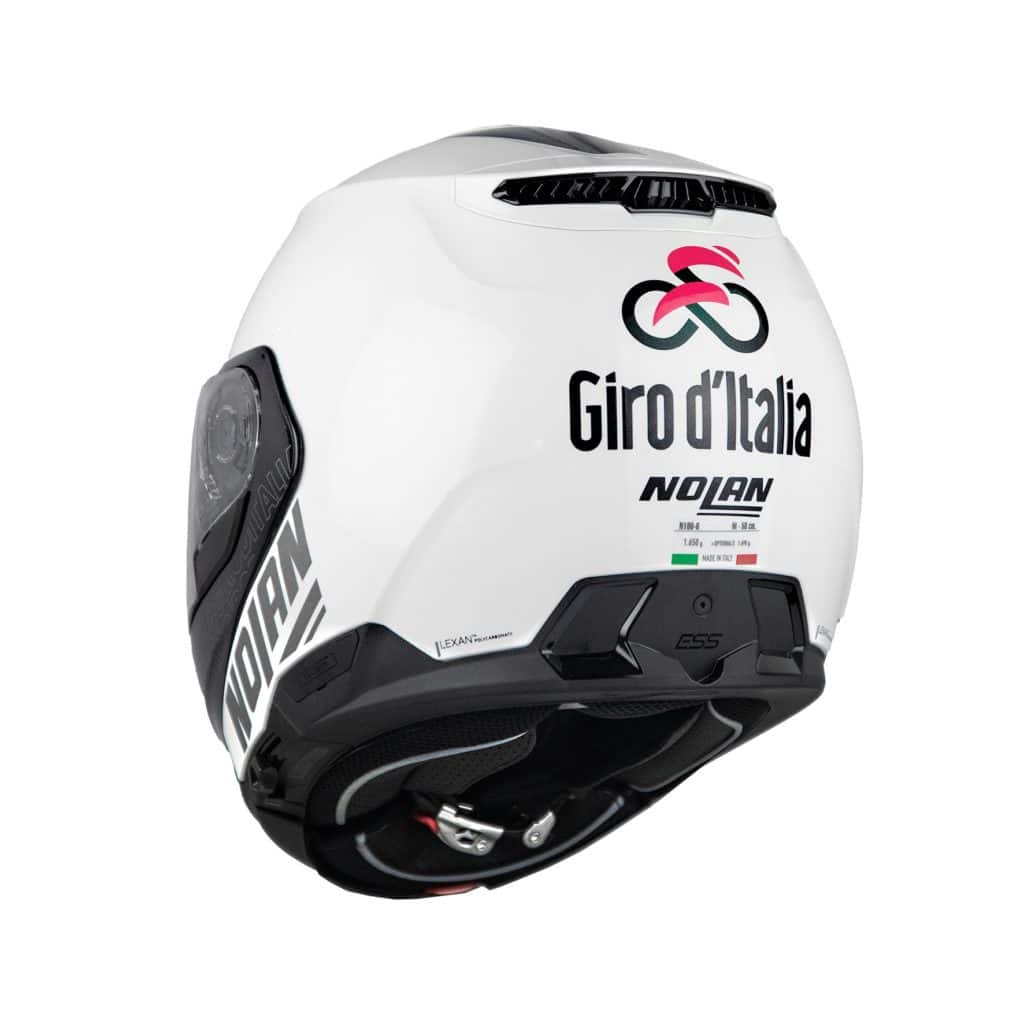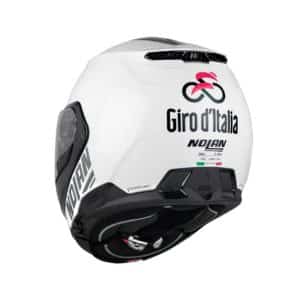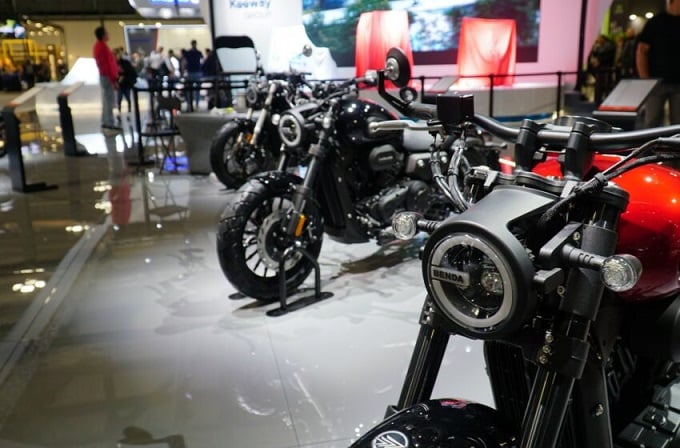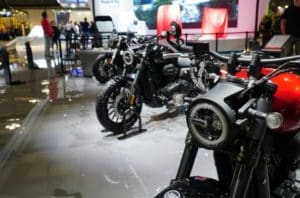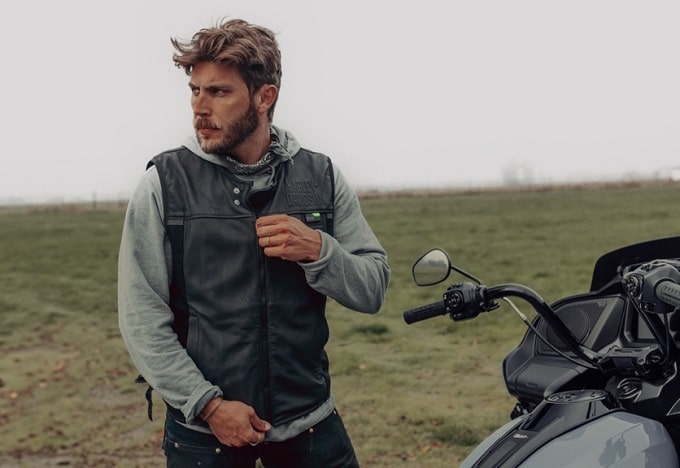Honda VFR 800 F 2014 – road test
Back to the origins for the most loved Sport Tourer ever
Honda VFR. To the passionate motorcyclist, and not only to admirers of the golden wing, these two words would be enough. And especially to those who have been through the years, only the name evokes, not with any shivers, many memories. The return of the VFR 800 F therefore deserves a few more words of introduction. It represents an icon of the two-wheeled world, which has seen growth over the years since its inception a nice group of admirers, many of whom remained faithful to the model for years. Born in 1986, even in 1982 if we consider Honda's first road V4, the VF750, it immediately showed off a very elegant line and a construction care unknown at the time, combining the aesthetics with unique technical refinements, such as the cascade distribution of gears and the chassis derived from racing bikes. All supported by an ease of driving that has become legendary, by a powerful engine (105 HP was a lot in the 80s) and above all by a comfortable and natural driving position. It was the progenitor of the Sports Tourer and for almost a decade it remained the most popular in the world of this type. The definitive consecration came in 1990, with a model with a completely aluminum frame, an enveloping fairing, a single-sided swingarm, also in aluminium, inherited from the legendary RC30 winner in Superbike, and even more comfort, even for the passenger. The engine lost 5 horsepower, reaching 100 horsepower, to comply with the restrictive laws in force at the time in some European countries, but in practice the lack was not noticeable. To all this we add the proverbial reliability of all the models that have followed one another over almost 30 years. It is not uncommon to meet enthusiasts riding specimens with well over 100 thousand km under their belt, which still run like clockwork, and over 75 thousand are still in circulation in Europe alone. The Sport Tourer par excellence has taken many of its admirers out for a walk or on holiday with their girlfriend and bags, without disdaining a trip to the track every now and then. Production continued without major changes, in light of the commercial success, until 1998, with the displacement from 750 to 800. The new model also adopted the innovative Dual-CBS braking system, injection instead of carburettors, while maintaining a very similar line so as not to disappoint his admirers. In 2001 Honda decided to revolutionize the model, also to reduce one of its main defects, the high consumption of the V4. VTEC arrived, a system that used only two valves per cylinder up to a certain number of revolutions, and then operated all four. Unfortunately, however, on this occasion the gem of gear-driven distribution was set aside in favor of a more classic and economical distribution chain. Even the line, as beautiful and harmonious as it was, never fully entered the hearts of the most purist "vuefferrists". In 2010, a completely new motorcycle was born, the VFR 1200, but that's another story. In the eternal trade-off between comfort and sportiness, the model veered decisively towards long-range touring, also introducing the striking novelty of the semi-automatic double-clutch gearbox without the handlebar lever, but it never pleased the historic VFR enthusiasts, perhaps precisely due to the excessive distance from the true spirit and unmistakable forms of VFR as it was known up to that moment. As the new Honda VFR 800 F 2014 is a clear return to the past, which attempts to continue the happy story of the most loved Sport Tourer ever, giving satisfaction to at least 75.000 possible customers, because those who own a VFR will hardly ever be able to replace it with another motorcycle that doesn't have those three letters on the fairing.
Aesthetics and finishes:
rating: 
Elegantly sporty, excellently finished
The cleanliness and refinement of the lines has always been a prerogative of the VFR, one of the reasons that has allowed her to win over so many admirers. At her first appearance, at Eicma 2013, the new VFR 800 F has received practically unanimous approval from the public, thanks to essential, elegantly sporty and modern lines, with theunion of the tradition of the model and current elements. Historically VFR also means no flashy colors or sticker kits on the fairings, just the ones with the three letters of the model and the Honda logo on the sides of the tank. Such elegance, however, does not mean giving up a sporty appearance, in this specific case achieved by developing the motorbike around a modern and technological front thanks to the full LED headlight, which combines with details taken from the past. In fact, the references to the VFR versions of the 90s, combined with major improvements, which improve the appearance of the new 800. One in particular concerns the radiators, returned to a traditional frontal position rather than lateral. With this measure it was possible to design a streamlined motorcycle with a particularly “slim” silhouette. Looking at it closely you can appreciate the details, as well as a care and constructive refinement that you will hardly find in competitors. It also turns out that it was born already prepared for the installation of side bags and that, in addition to the indicators, the daytime running lights are also integrated into the mirrors. The front end sports radially mounted calipers, the rims are elegant, even in colour, ten spokes with a very small section, a detail made possible by the particular die-casting process used to produce them. At the rear the VFR shows off one of its most loved classics, a beautiful single-sided aluminum swingarm, which also allows it to position the disc centrally to the wheel axis. The instrumentation is modern, but with a traditional appearance thanks to the large central analogue tachometer, flanked by two displays with excellent readability in any light condition. The only shame is the absence of the now widespread controls on the handlebars, which would allow you to scroll through the various data without the need, as in the past, to use the two buttons on the dashboard.
Engine and performance:
rating: 
Double soul to reduce consumption without sacrificing sportiness
Almost 30 years without giving in to the temptation to grow in displacement and power. This in short is the formula adopted by Honda for its Sport Tourer. When it was born in 1986 the 750 displacement was the one adopted by large sports bikes, today the displacements have increased and an 800 is an average. The VFR 1200 was an attempt to revolutionize the concept, moving into the high-performance Sports Tourer segment and pandering to a market that seemed thirsty for cubic centimeters and horsepower. You have 173, but they don't seem to be enough to achieve sales results that have partly failed to meet forecasts, while still maintaining leadership in your market segment today. The new 800 joins it without replacing it, sending it into retirement. The VRF 1200 remains in the price list, but Honda with the new VFR 800 F tries to return to the most successful formula, with the "old" engine, which is one of the least new elements of the entire bike, together with the frame. Be careful, however, as there is no lack of news here either, with important ones refinement interventions, which led to a reduction in consumption and optimized delivery. They were the intake and exhaust ducts were revised, the side exhaust is completely new, ed the timing has also been improved. The power decreases slightly (-4CV) with 106 HP at 10.250 rpm, with 75 Nm of torque at 8.500. The arrangement of the cylinders, with two 90° V banks it has always been a trademark of the model, but it is also one of the biggest problems in containing consumption. If on the one hand it allows you to obtain a more rounded and full-bodied delivery than a classic inline 4, essentially combining some advantages of a V2 with those of traditional multi-fractional engines, on the other hand the VFR is remembered by many as a particularly "thirsty" motorbike. In 2001, to remedy this problem, it introduced VTEC, which makes the engine have two faces. Smooth and quiet, with reduced consumption, up to 6.000 rpm approximately, speed up to which it works with only two valves per cylinder, sporty and brilliant at high revs, where all 16 valves come into play. The valves whose operation is managed by a hydraulic circuit, which activates them when passing 6.400 rpm, are put back to rest when it drops below 6.100. The solution was developed well before 2001 by the wing company, which introduced it for the first time on the CBR400 in 1983, and has a single flaw, from which the new VFR 800 F is not exempt: up to the opening threshold of all the valves there is no decisive push, which begins to become full-bodied only at the threshold of 7.000 rpm, also accompanied by a decisive and pleasant change of voice. Translated, this means that in second gear, in the classic exit from a hairpin bend, you find yourself riding a very quiet motorbike until you reach 70-80 km/h, or you are forced to use first gear, which however involves a more accentuated and annoying on-off when cornering. With the latest changes made on the new VFR 800 F the engine is even more regular in delivery, VTEC opening is now smoother, but over this regime it has lost some of its malice. In our opinion, but it is an opinion that may not be shared by everyone, a handful more horsepower would have been appreciated and with the profound renewal of this model it would have been reasonable to expect a raising of the bar, moving it towards 120-125 HP . It was decided to keep the spirit of the VFR unchanged, with an engine that pushes well beyond the maximum power regime, stopping only at 12.000 rpm, therefore almost 2.000 rpm higher, to allow less frenetic use of the gearbox when he decides to drive it keeping it in the optimal use range, where the VTEC keeps all the valves functioning. However, it is not mandatory to always drive it at the limit, because under the engine it will not be as brilliant, but it still picks up well, optimally supporting the driver who knows how to drive in a rounded and regular way, making the VFR dance from one corner to the next, using the brakes less and therefore having less need to wring out all 106 HP at each corner exit. And this is where she excels, with an addictive driving pleasure, thanks to a fantastic chassis and chassis, which make it accessible to everyone, or almost everyone. decidedly high cornering speeds, without any risk. On the new VFR 800 F it is available as Quickshifter electronic gearbox optional, to upshift without clutch and with wide open throttle. With the traditional gearbox, like that of the sample under test, the clutches are rather hard, and clutchless gear changes are absolutely prohibited, to which it is rather "allergic". Only when going uphill, in more sporty driving, is it possible to engage the gears without using the clutch, but after a few hours on the new VFR 800 F, even the most experienced rider is encouraged to go back to using the clutch practically all the time. The sound of the engine, on the other hand, is a trademark, you can immediately recognize it with the engine running, with the idle quite high and you can appreciate it for the sound that becomes decidedly racing when the VTEC opens the ball. TCS traction control is standard, whose disengagement button appears to be poorly integrated with the other controls, which we found almost superfluous on dry asphalt, given the regularity of the engine's delivery, but useful, if not indispensable, on a motorbike that has to cover kilometers in all the seasons, without stopping in case of rain or with slippery and treacherous surfaces.
Ride and handling:
rating: 
Comfortable on the motorway, it's a pleasure to make it dance around the curves
As soon as you get into the saddle, memories of the old versions of the VFR immediately resurface. The position and ergonomics have essentially been the same for 30 years. You are comfortable, slightly more "encased" in the saddle than the latest 800, but with the slim bike well placed between your knees, with the very pleasant sensation of always having it under your control. It appears a lot lighter and easier to maneuver than the 242 kg (-7 from the previous model) would suggest. Of course, compared to the maxi enduros that dominate the sales charts, the position imposed by the clip-on handlebars is decidedly sportier and will be a little less comfortable on long journeys, but it is a excellent compromise for a motorcycle that has always been well suited to touring use, but also to a session on the track if the need arose. In the city its main problem is represented by the heat of the V4 between the legs, on the other hand it is easy to handle. Its ideal habitat are But extra-urban roads with fast curves, where it can make a difference compared to the competition, but where above all, it is able to give a great driving pleasure. Be careful though, the new VFR 800 F deliberately does not cut with the past and, from certain points of view, is very reminiscent of motorbike riding from over 10 years ago. On a couple of occasions we had the opportunity to meet with those who began riding a VFR for over 20 years, a motorbike which they found futuristic and very modern at the beginning of the 90s and which today cannot deny that it has a slightly retro in the new model that has just arrived on the market. In this, Honda preferred to be guided by what some "vuefferrists" suggested, avoiding developing a bike that was too different from what they would have wanted and desired. Who knows, in a few years he will be able to revolutionize the concept perhaps with an intermediate product between the 800 and the 1200, but for now that's fine. The motorbike it must therefore also be guided physically, is absolutely intuitive and easy for an average or expert rider, but is less easy and comfortable than a current maxi enduro. The pleasure and satisfaction that you can convey while driving it also depends on this. Furthermore, the chassis makes it predictable and effective, it is natural to ride it in a sporty manner, perhaps even with a passenger and bags mounted, because the excellent balance never leads to having to deal with unexpected swaying or loss of grip. Here too we are faced with an excellent compromise between sportiness and comfort of the settings of the Showa front fork, with traditional 43 mm stanchions, and of the rear monopole with Pro-Link layout, both fully adjustable. The frame, apparently inherited from the "old" 800 as it was, has actually been refined and improved, the rear subframe (-2 kg) is now made of aluminum and not steel, also because it no longer has to support the weight of the exhausts ( another 5 kg less). On the motorway the VFR 800 F offers decent aerodynamic protection, effective up to around 150 km/h, and great stability in bends faced at high speed. No combined braking but ABS as standard, with Tokico radial calipers with 4 pistons that act on the two 310mm front discs. Braking is excellent, well modulated and effective even when you're serious and in prolonged and intense use. The two-channel anti-lock braking system works excellently, never invasively, leaving the mind free from problems related to unexpected braking events.
Price and consumption:
rating: 
It starts at 12.500 euros and is cheap on the motorway, a little less if you dare around the bends.
The price of 12.500 euros It's certainly not among the most contained, but the bike's equipment is truly complete, practically the only thing missing is cruise control. Traction control, ABS, 5-level heated grips, full LED lights, 2-position adjustable saddle (789 or 809 mm), central stand, just to mention some of the accessories with which the VFR 800 F is equipped as standard. Available in three colors: red white or the black of our test, the first of the three turns out to be, at least in our opinion, the most appropriate for highlighting its beautiful lines. The consumption chapter is linked, as was obvious to expect, to the technical peculiarity of the 4cc V800 engine. If he gets a flattering result on the motorway, we are at over 21 km/h and 130 km/h, the credit goes to a rather low speed at this speed, of 5.600 rpm, lower than the valve opening speed of the VTEC system. Consumption can even go beyond 25 per liter if you use the VFR 800 F carefully, always keeping the speed below 6.000 rpm. However, technology cannot completely eliminate the worst flaw of the V4 engine architecture, the not exactly low consumption. If you want to dare a little, making full use of all its power, the result is clearly different. On average, during our test, constantly keeping the engine "cheerful", we did not go beyond 15-16 km/l. It remains a decent result, especially when compared with the last 800, which was even more fuel-hungry.
PROS AND CONS
We like it:
Elegantly sporty lines, quality of finishes, brilliant engine over 7.000 rpm and low fuel consumption in motorway use, comfort and ease of driving
We do not like it:
Engine output up to 6.000 rpm, which heats up in traffic and whose consumption becomes high by fully exploiting it
Honda VFR 800F 2014: the Motorionline Report Card
| Motor: |      |
| Handling: |      |
| Gearbox and transmission: |      |
| Braking: |      |
| Suspensions: |      |
| Guide: |      |
| Pilot comfort: |      |
| Passenger comfort: |      |
| Equipment: |      |
| Quality price: |      |
| Line: |      |
| Consumption: |      |
Test clothing:
Jacket: Spidi Street Tex jacket
Trousers: Furious Tex JEANS
Boot: Dainese TR-COURSE OUT AIR
Gloves: Spidi Jab RR
Helmet: Airoh Phantom
Thanks for the photos to Matteo Zuccolo, a restaurateur with a passion for motors and photography.
if you want to always be updated on our news
Follow us here

